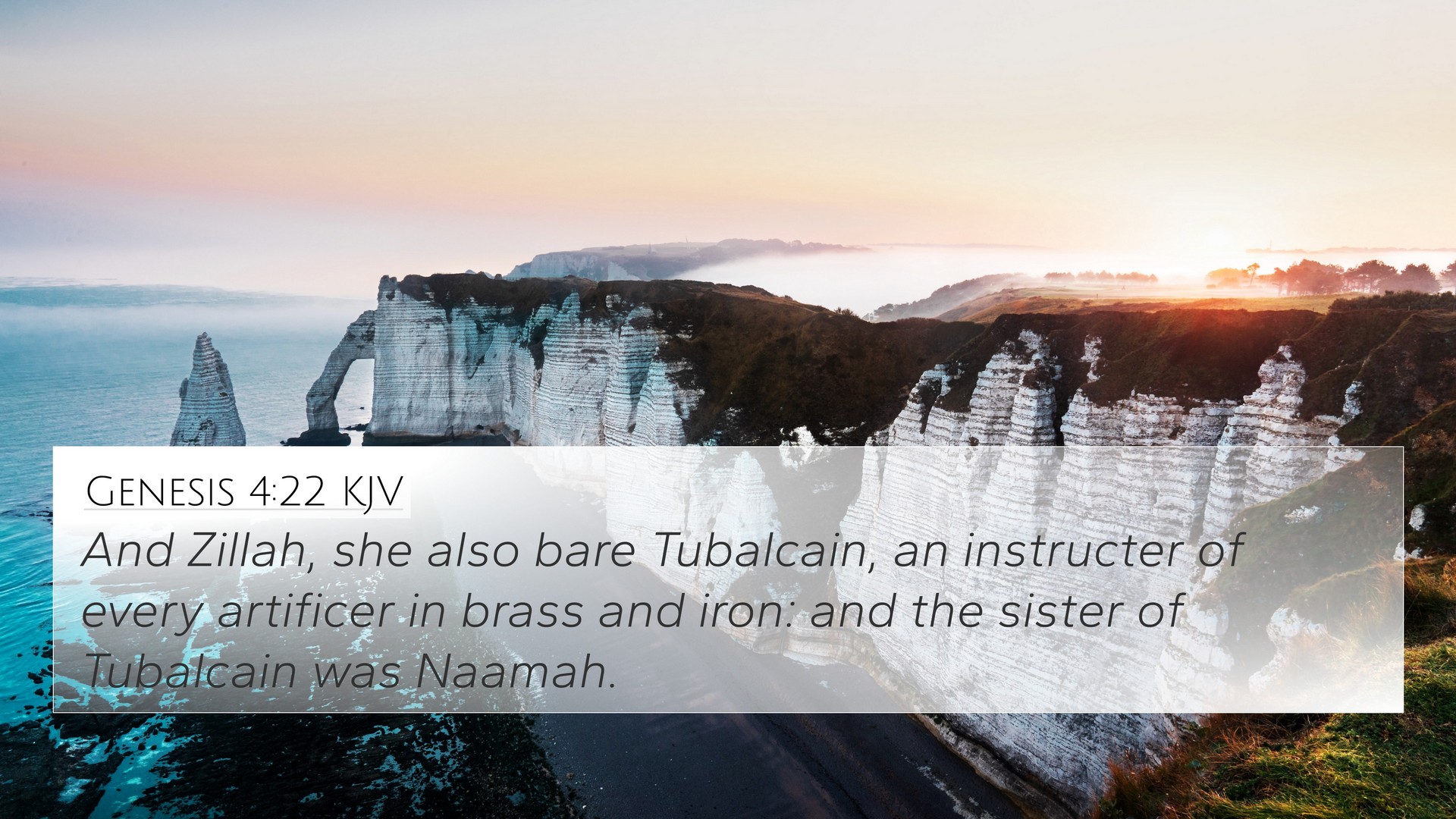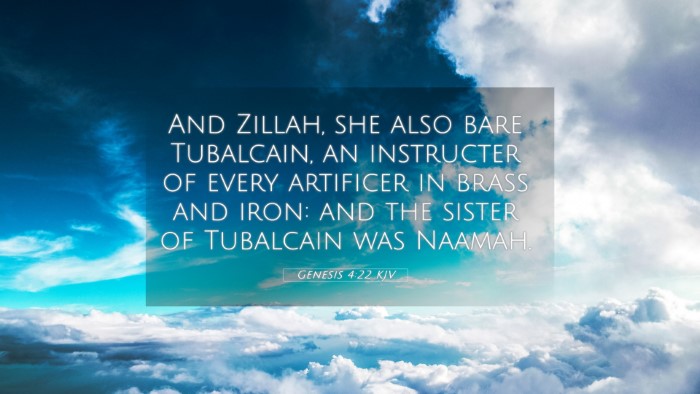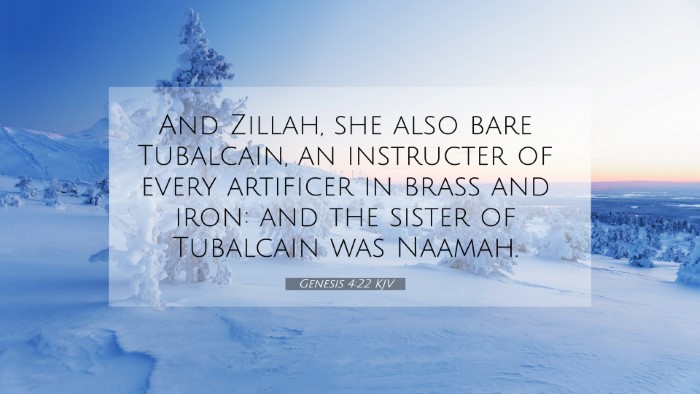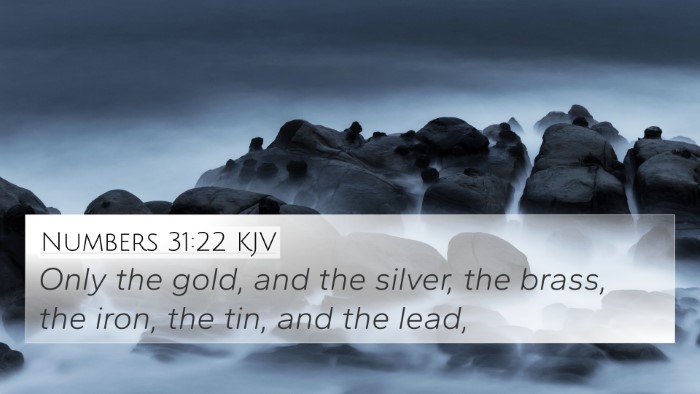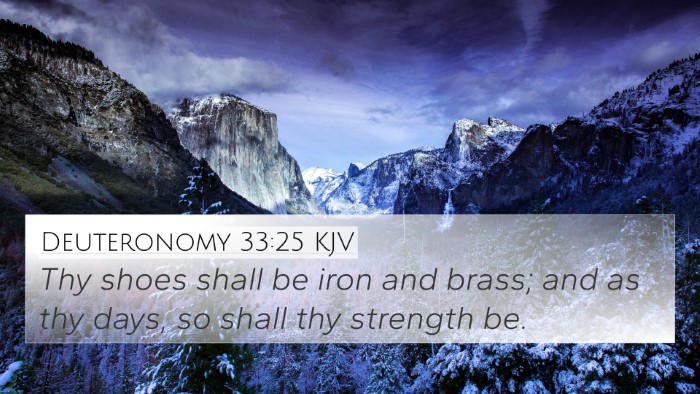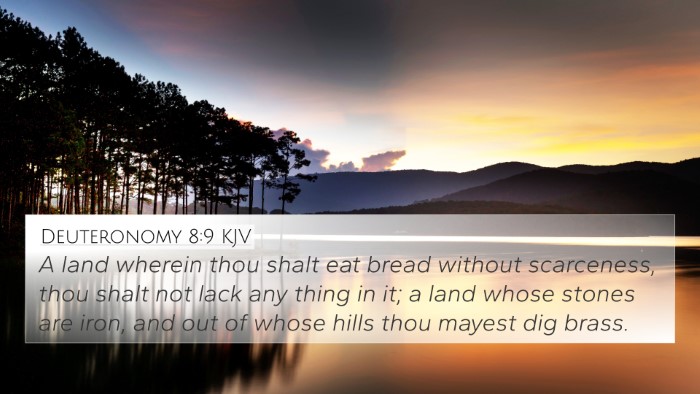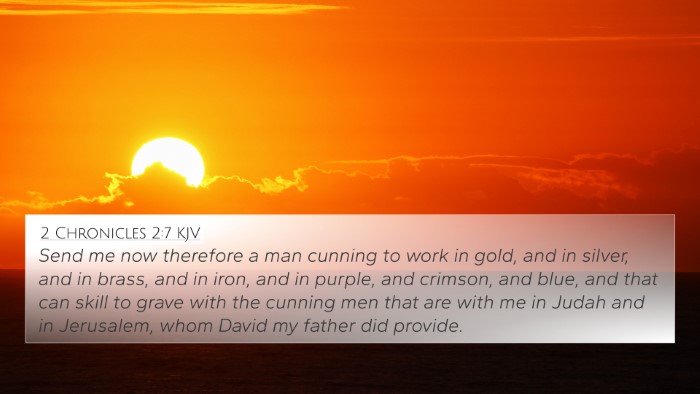Understanding Genesis 4:22
Genesis 4:22 states: "And Zillah, she also bore Tubal-Cain, an instructor of every craftsman in bronze and iron; and the sister of Tubal-Cain was Naamah." This verse gives insight into the early developments of civilization and the advancement of human skills, specifically in metallurgy and craftsmanship.
Interpretation of Genesis 4:22
In this verse, Zillah's son, Tubal-Cain, is recognized as an instructor of metalwork, a significant skill in the development of society. The mention of bronze and iron indicates the technological advancements during this period.
Thematic Insights
- Craftsmanship: Tubal-Cain represents the burgeoning professions that were emerging in early human history.
- Technological Progress: The advancement of metallurgy reflects humanity's increasing ability to manipulate resources in their environment.
- Lineage and Culture: The verse connects familial lines and cultural advancements, suggesting a broader narrative of human achievement.
Cross-referencing Biblical Texts
Genesis 4:22 can be connected to other verses that discuss human development, skill, and lineage. Below are several notable cross-references:
- Genesis 1:26-28: The creation of man and the divine mandate to fill and subdue the earth hints at human innovation.
- Genesis 2:15: Adam being placed in the Garden to tend and keep reinforces the idea of human work and development.
- Exodus 31:3-5: God's empowerment of artisans in crafting the Tabernacle parallels Tubal-Cain's skills in metalwork.
- Ecclesiastes 2:24: The enjoyment of labor and craftsmanship speaks to the deeper reflections on manual skills in human life.
- Isaiah 54:16: God as the creator of smiths reflects on the significance of those who work with metal.
- Proverbs 22:29: Highlighting a man's skill in his work ties back to the importance of craftsmanship.
- James 1:17: Every good gift and perfect gift coming from above can relate to the inherent talent in human craftsmanship.
Comparative Bible Verse Analysis
Analyzing Genesis 4:22 in context with the above references, we see a cohesive narrative that explores God's intent for humanity to innovate and create. Crafts like those begun by Tubal-Cain pave the way for later developments in biblical history, reflecting God's gift of creativity.
Connections Between Old and New Testament
In a broader sense, the skills and professions established in Genesis continue to inform spiritual teachings in the New Testament, connecting themes of labor, artistic expression, and divine gifts. The development of specific crafts can also symbolize the spiritual gifts Christians use in service to God and community.
How to Use Bible Cross-References
Using the tools for Bible cross-referencing enriches understanding and reveals thematic links throughout Scripture. Here are some methods:
- Bible Concordance: Use a concordance to locate keywords related to craftsmanship and skill.
- Bible Cross-Reference Guides: These can help track thematic development across different books.
- Cross-Reference Bible Study: Engage in study sessions focusing on interconnected verses.
- Bible Chain References: Work through related verses that build upon the themes found in Genesis.
- Identifying Thematic Connections: Consider how early chapters influence later biblical teachings on talent and work.
Inter-Biblical Dialogue
By considering the inter-Biblical dialogue, the evolution of themes starting from Genesis informs New Testament writings on work, skill, and spirituality. The legacy of Tubal-Cain as a craftsman highlights the ongoing importance of labor as part of God's design for humanity.
Conclusion
Genesis 4:22, while seemingly straightforward, unlocks a wealth of understanding about human potential and divine intention regarding creativity. Through comparative analysis and cross-referencing related verses, we can draw rich, interconnected lessons for our lives, reflecting on how we contribute through our skills as God’s creation.
Further Study Suggestions
- Examine the significance of labor in biblical texts.
- Explore the development of technology and its impact on society.
- Study the genealogies in Genesis and their implications for cultural narratives.
- Investigate how New Testament teachings expand on Old Testament principles of work.
